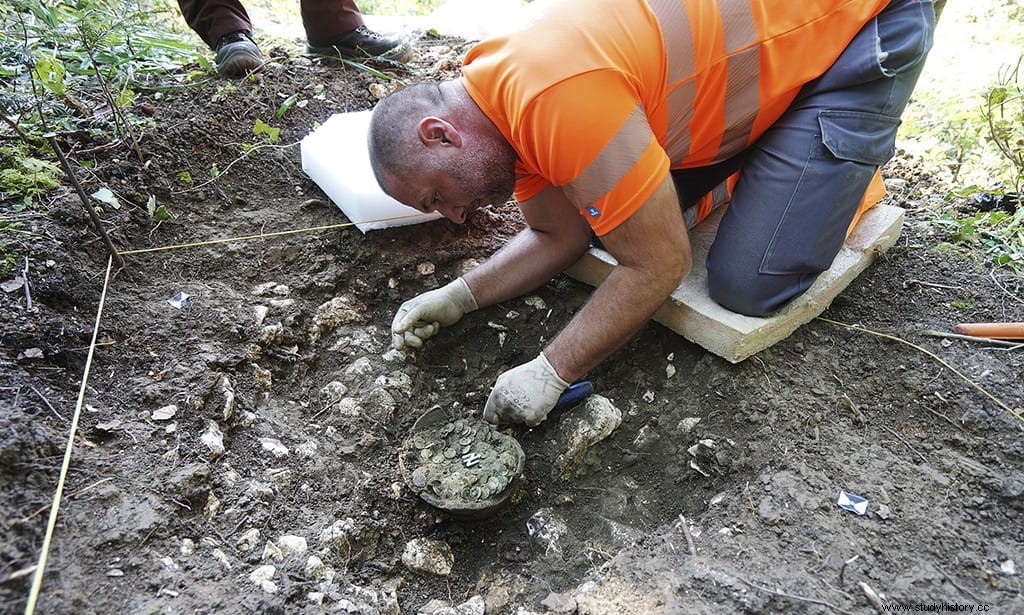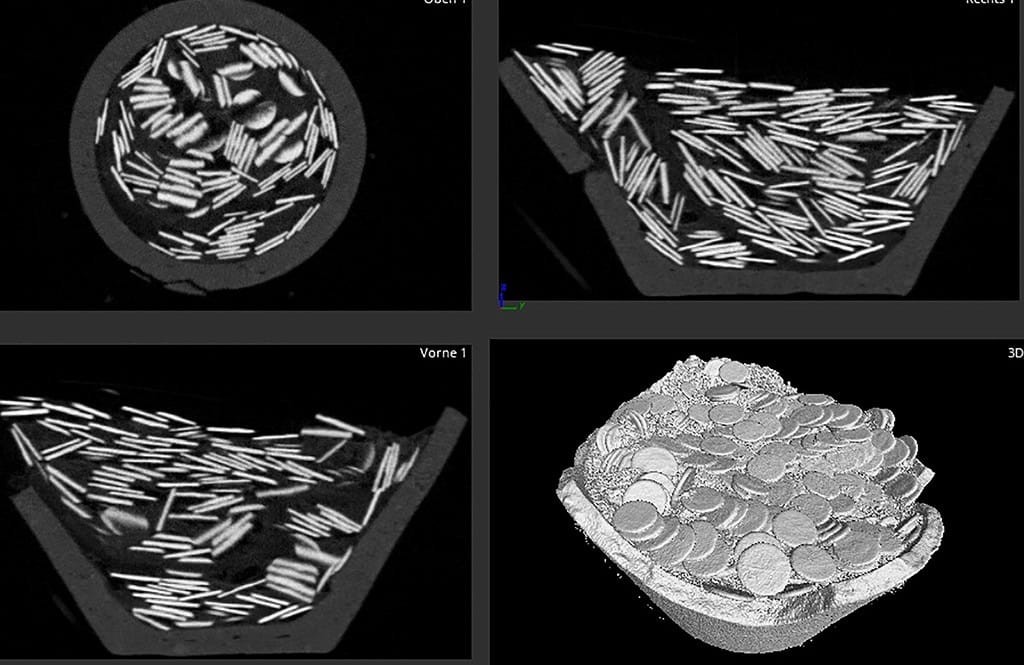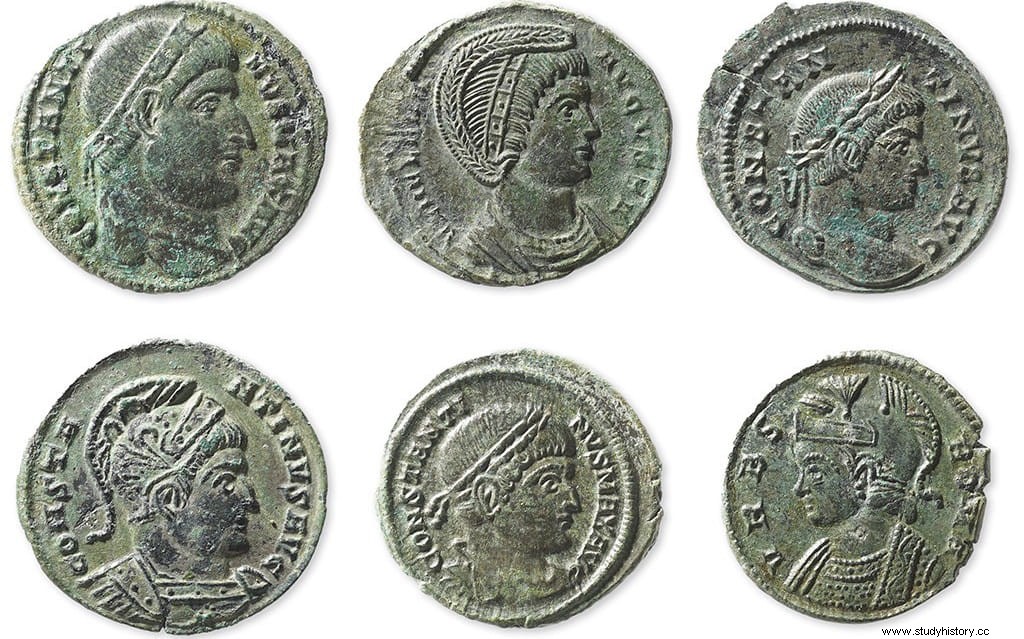In September 2021, volunteer archaeologist Daniel Lüdin found a vessel containing 1,290 coins from the 4th century AD. near Bubendorf, in a wooded area next to Wildenstein Castle, in northern Switzerland.
The discovery and the initial inspection of the find by Archäologie Baselland were doubly surprising:on the one hand, because of a piece of leather that divided the coins into two portions, and on the other, because of the unusual dating of the find, since they are hardly known. hoards of coins from around 332-335 AD
The advantage of recovering such finds en bloc is that the coins can be documented and discovered under laboratory conditions. In this case, the composition of the find was also previously examined by computed tomography at the Swiss Federal Laboratories for Materials Testing and Research (EMPA) in Dübendorf.

The EMPA has X-ray equipment powerful enough to be able to penetrate the content in millimeter layers. These images already showed a free zone between two portions of coins. The subsequent analysis in the laboratory revealed that it was a simple piece of cowhide, which separated the coins into two parts.
We can only speculate on the purpose of this division. Were there two different owners in this case? The only thing that can be assured at the moment is that the coins were collected in a short time and the pot was filled with all the coins at the same time.

The coins are made from a copper alloy with a very low silver content. Consequently, they are a lot of chump change with modest purchasing power. The value of all the coins together is probably equivalent to a solid of 4.5 grams of gold, which is equivalent to about two months' pay for a soldier at the time.
All 1,290 coins were minted during the reign of Emperor Constantine the Great (306-337 AD). The most recent specimens date from the years 332-335 AD.
In the late Roman period (3rd and 4th centuries) burials of this type abound:in difficult times - caused by civil wars, invasions of neighboring ethnic groups or economic crises - many people buried their valuables to protect them from access by foreigners.

However, for the period in which the Bubendorf vessel was buried, there are hardly any comparable hoards in the entire Roman Empire. These years are characterized more by their political stability and a certain economic recovery. On the one hand, this makes the find very special, but on the other hand, it raises more puzzles.
For what reasons were the coins buried and why were they not unearthed again? Apart from personal reasons that can no longer be traced, the place where the coins were found could give clues to an explanation:it is located in the border area between three Roman estates. Who knows, maybe the coins were kept here in some kind of frontier shrine or offered to the gods.
